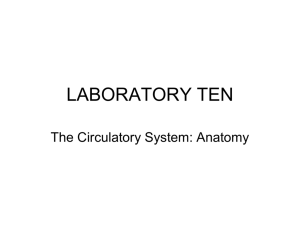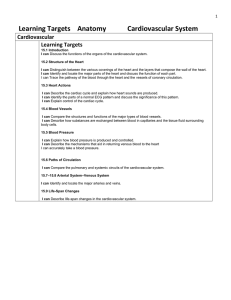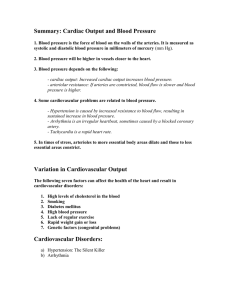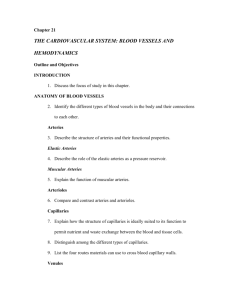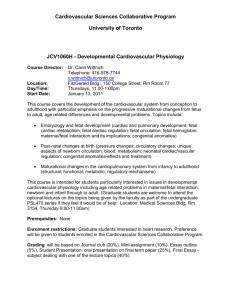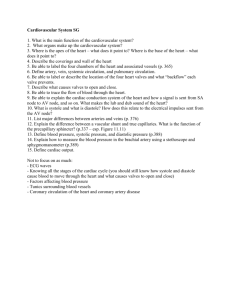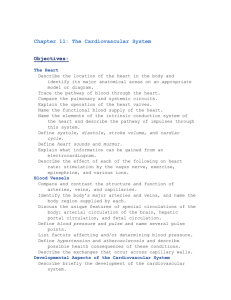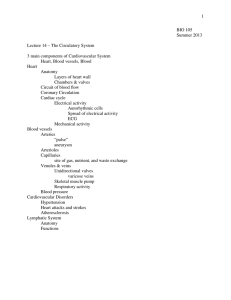Cardiovascular System Objectives Cardiovascular System: The
advertisement
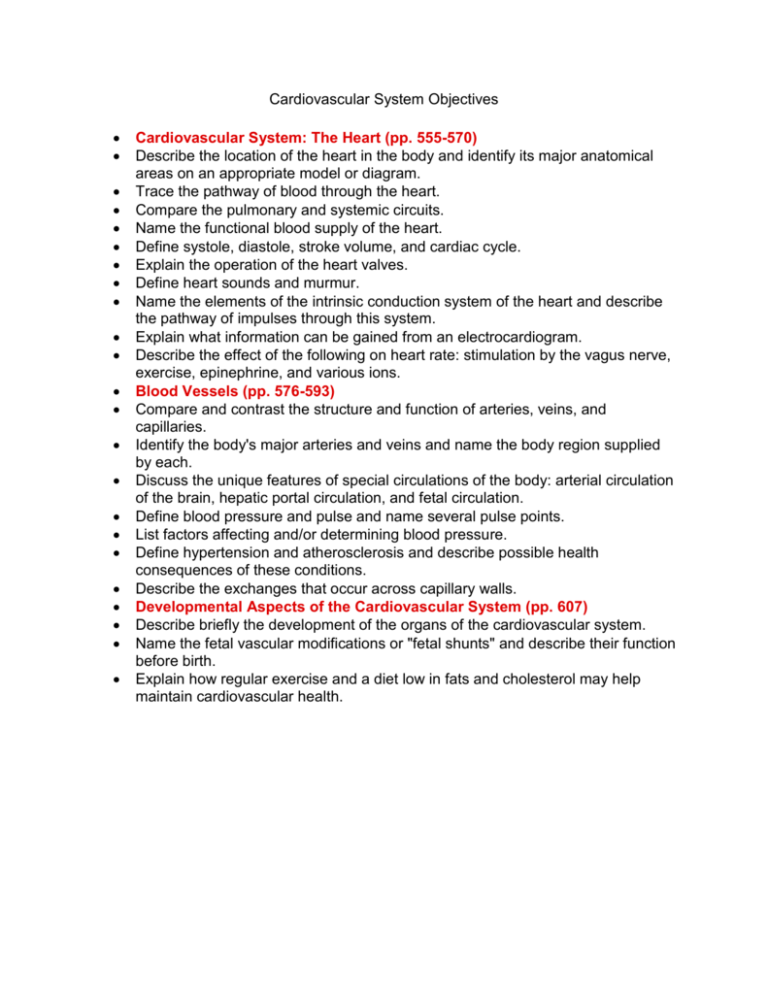
Cardiovascular System Objectives Cardiovascular System: The Heart (pp. 555-570) Describe the location of the heart in the body and identify its major anatomical areas on an appropriate model or diagram. Trace the pathway of blood through the heart. Compare the pulmonary and systemic circuits. Name the functional blood supply of the heart. Define systole, diastole, stroke volume, and cardiac cycle. Explain the operation of the heart valves. Define heart sounds and murmur. Name the elements of the intrinsic conduction system of the heart and describe the pathway of impulses through this system. Explain what information can be gained from an electrocardiogram. Describe the effect of the following on heart rate: stimulation by the vagus nerve, exercise, epinephrine, and various ions. Blood Vessels (pp. 576-593) Compare and contrast the structure and function of arteries, veins, and capillaries. Identify the body's major arteries and veins and name the body region supplied by each. Discuss the unique features of special circulations of the body: arterial circulation of the brain, hepatic portal circulation, and fetal circulation. Define blood pressure and pulse and name several pulse points. List factors affecting and/or determining blood pressure. Define hypertension and atherosclerosis and describe possible health consequences of these conditions. Describe the exchanges that occur across capillary walls. Developmental Aspects of the Cardiovascular System (pp. 607) Describe briefly the development of the organs of the cardiovascular system. Name the fetal vascular modifications or "fetal shunts" and describe their function before birth. Explain how regular exercise and a diet low in fats and cholesterol may help maintain cardiovascular health.

